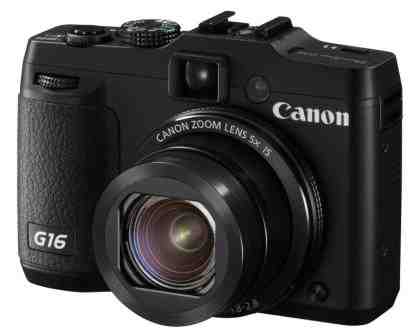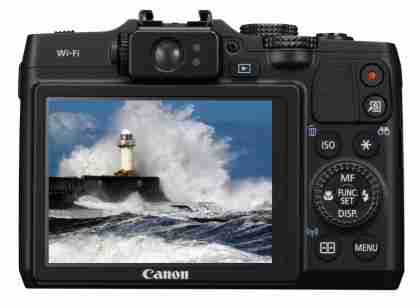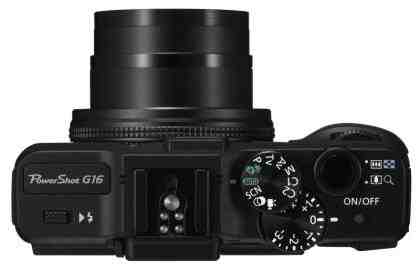Canon G series cameras have been providing pocket-sized cameras for discerning photographers for over a decade. With their optical viewfinders, hotshoes and lots of buttons and dials, they're the sort of cameras that make SLR users feel at home. Meanwhile, their reasonably large 1/1.7in sensors and wide-aperture lenses give a significant boost to low-light image quality compared to run-of-the-mill compact cameras.

The premium compact market has changed beyond recognition in the last couple of years, though. Compact system cameras (CSCs) are smaller, better and cheaper than ever, and their sensors are between three and nine times bigger (by surface area) than the G16's sensor. These big sensors are appearing in fixed-lens compacts, too, such as the Sony RX100 II . By these standards, the G16's 1/1.7in sensor looks pretty dinky, so it's going to have a tough time competing for image quality.
CONTROLS AND HANDLING
We can't fault it for controls, though. There's a command dial and rear wheel for adjusting settings, a mode dial and yet another dial for exposure compensation. Labelled buttons cover ISO speed, focus mode and exposure lock duties, and there's a customisable button that we assigned to a one-touch manual white balance function. Various other functions including drive mode, JPEG and RAW settings and the integrated ND filter are neatly organised in the quick-access menu, which can be customised to hide any settings you don't need.

Beyond these great controls, the ergonomics are more mixed. At 356g it's relatively heavy for a compact camera, but it feels reassuringly solid and it sits comfortably in the hand. The 3in, 922,000-dot screen is nice and sharp but we miss the articulated design, which Canon dropped from the range a couple of years ago. It's great to have an optical viewfinder, but it'd be even better if the view was bigger and less blurry. Looking through it involved perching an eyebrow on the hotshoe, which wasn't the most comfortable experience.

Wi-Fi is built in, but it's a relatively simple implementation. Photos and videos can be browsed and copied using the accompanying iOS and Android apps, and there's an option to use a phone's GPS radio to geo-tag photos. It can't transfer RAW files to the app, though, and there's no remote control function.
PERFORMANCE - SHOT SPEED
The Canon PowerShot G15 was hampered by lethargic performance, so it's good to see some improvements here. The G16 switched on and captured a shot in 1.7 seconds, and took the same time between subsequent shots. It's still not exactly blistering performance, though. Bizarrely, it was faster in RAW mode, capturing a shot every second.
Continuous mode told a different story altogether, capturing JPEGs at an incredible 10fps –not just for a short burst but for over 50 frames before slowing very slightly. Only the Canon S120 matches this performance; nothing else comes close. However, we're not sure how useful it is outside of sports and wildlife photography, and the 28-140mm zoom range doesn't really lend itself to those types of photography. In most other situations it's likely to produce masses of very similar shots.
As with the S120, the G16 can also shoot at around 5fps with continuous autofocus. However, the camera drifted in and out of focus, and only a small percentage were sharp. It seems as if Canon has gone for impressive specs rather than practical features here – a slower continuous mode that delivered more consistent results would be far more useful.
